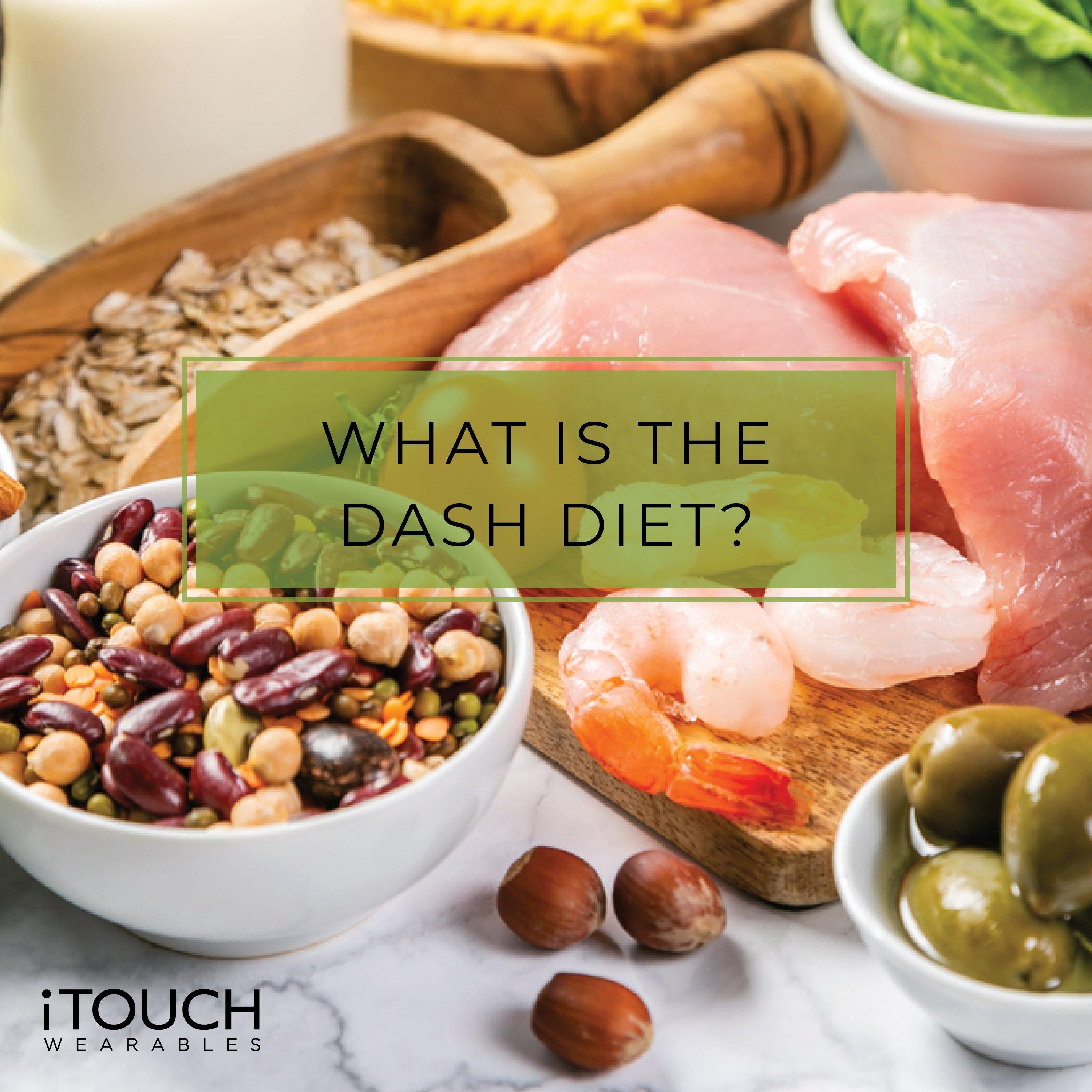
What is the DASH Diet?
What is the DASH Diet you ask? Well it is one of the best-ranking diets out there - being one that has, for the eighth consecutive year, been one of U.S. News and World Report highest ranked diets among nearly 40 the publication has reviewed. The news about the diet and its amazing rank came out to the market as new research suggests that combining DASH, otherwise known as Dietary Approaches to Stop Hypertension, with a low-sodium diet can actually have the potential to lower blood pressure. It can also be just as well as, if not better than many anti-hypertension medications prescribed for the disease. With its focus on vegetables, fruits, whole grains, low-fat dairy, and lean proteins, there is no wonder why the DASH diet tied this year for “best overall” diet and was ranked No. 1 in the “healthy eating” and “heart disease prevention” categories. If you are curious to see what this diet is all about, look no further! We got the ultimate guide for you! So sit back, relax, and enjoy all you need to know about the DASH diet:
The Basics of DASH

The DASH diet is actually quite easy to follow. It encourages you to reduce the sodium in your diet and eat a variety of foods rich in nutrients that help lower blood pressure, such as potassium, calcium and magnesium. These foods can include that of fruits and vegetables, whole grains, lean proteins, low-fat dairies, and even nuts and legumes, while cutting out that of fats and oils, high sugar foods like sweets, and alcohol. This diet is specifically important for those with high blood pressure, being rather beneficial. The effects of the DASH diet for blood pressure are instrumental, as you will learn.
By following the DASH diet, you may be able to reduce your blood pressure by a few points in just two weeks. Over time, the top number of your blood pressure (which is known as the systolic blood pressure) could drop by eight to fourteen points, which can make a significant difference in your health risks. Because the DASH diet is a healthy way of eating, it offers health benefits besides just lowering blood pressure. The DASH diet is also in line with dietary recommendations to prevent osteoporosis, cancer, heart disease, stroke and diabetes.
DASH and Lower Sodium

So you may be wondering what foods to eat on the DASH diet. As we said, the DASH diet emphasizes vegetables, fruits and low-fat dairy foods, while balancing a moderate amounts of whole grains, fish, poultry and nuts. In addition to the standard DASH diet, there have been variations made to accommodate every lifestyle, such as a lower sodium version of the diet. You can choose the version of the diet that meets your health needs:
- Standard DASH diet :You can consume up to 2,300 milligrams (mg) of sodium a day.
- Lower Sodium DASH diet : You can consume up to 1,500 mg of sodium a day.
When it comes to both versions of the DASH diet, the aim is to reduce the amount of sodium in your diet compared with what you might get in a typical American diet. The average American diet can acquire more than a whopping 3,400 mg of sodium a day or more, which is definitely not healthy when looking to cut back.
The standard DASH diet meets the recommendation from the Dietary Guidelines for Americans to keep daily sodium intake to less than 2,300 mg a day. The American Heart Association recommends 1,500 mg a day of sodium as an upper limit for all adults. If you aren't sure what sodium level is right for you, talk to your doctor.
What To Eat On The DASH Diet

In attempting either version of the DASH Diet, both versions include lots of whole grains, fruits, vegetables and low-fat dairy products, as well as some fish, poultry and legumes. The diet also encourages a small amount of nuts and seeds a few times a week. While this diet encourages you to choose healthier options when it comes to food, you can eat red meat, sweets and fats in small amounts. However, the DASH diet is low in saturated fat, trans fat, and total fat. Here's a look at the recommended servings from each food group for the 2,000-calorie-a-day DASH diet.
Grains: 6 to 8 Servings a Day
Grains include bread, cereal, rice and pasta. Examples of one serving of grains include 1 slice whole-wheat bread, 1 ounce dry cereal, or 1/2 cup cooked cereal, rice, or pasta.
- It is critical to include whole grains because they have more fiber and nutrients than refined grains. For instance, using brown rice instead of white rice, whole-wheat pasta instead of regular pasta, and whole-grain bread instead of white bread can be significantly beneficial for your diet. Look for products labeled "100% whole grain" or "100% whole wheat."
- Grains are naturally low in fat, but in order to main that, keep them away from butters, creams, and cheeses.
Vegetables: 4 to 5 Servings A Day
Tomatoes, carrots, broccoli, sweet potatoes, greens and other vegetables are full of fiber, vitamins, and such minerals as potassium and magnesium, making them amazing foods to get the best out of the diet. Examples of one serving include 1 cup raw leafy green vegetables, or 1/2 cup cut-up raw or cooked vegetables.
- Don't think of vegetables only as side dishes! Instead, use a hearty blend of vegetables served over brown rice or whole-wheat noodles to serve as the main dish for a meal. You'll be surprised by how full you feel!
- Fresh and frozen vegetables are both good choices. When buying frozen and canned vegetables, choose those labeled as low sodium or without added salt.
- To increase the number of servings you fit in daily, be creative. Try replacing half of the meat in a recipe with more vegetables!
Fruits: 4 to 5 Servings A Day
Many fruits need little to no preparation to become a healthy part of a meal or snack. Like vegetables, they're packed with fiber, potassium and magnesium and are typically low in fat, mainly coconuts being the exception. Examples of one serving include one medium fruit, such as an apple or an orange, 1/2 cup fresh, frozen, or canned fruit, or 4 ounces of fresh juice.
- Trying to have a piece of fruit with meals and one as a snack, then round out the end of your day with a dessert of fresh fruits and maybe a little dollop of yogurt!
Dairy: 2 to 3 Servings A Day
When going for dairy, milk, yogurt, cheese makes for some major sources of calcium, vitamin D and protein. But the key of successfully keeping up to the DASH diet is to make sure that you choose dairy products that are low-fat or fat-free. This is because otherwise they can be a major source of fat, and most of it is saturated.
Examples of one serving include 1 cup skim or 1 percent milk, 1 cup low-fat yogurt, or 1 1/2 ounces part-skim cheese.
- Low-fat or fat-free frozen yogurt can help you boost the amount of dairy products you eat while offering a sweet treat. Trying add fruit as suggested before for a healthy twist.
- Go easy on regular and even fat-free cheeses because they are typically high in sodium.
Lean Meats: 6 One-Ounce Servings Or Less A Day
Many leans meat can be a rich source of protein, B vitamins, iron and zinc that are essential to our health. Choose lean varieties and aim for no more than 6 one-ounce servings a day. You can than choose to start cutting back on your meat portion will allow room for more vegetables.
Examples of one serving include 1 egg or 1 ounce of cooked meat, poultry or fish.
- Trim away skin and fat from poultry and meat and then bake, grill, or roast instead of frying in fat.
- Eat heart-healthy fish, such as salmon, herring and tuna. These types of fish are high in omega-3 fatty acids, which are healthy for your heart.
Nuts, Seeds, or Legumes: 4 to 5 Servings A Week
Almonds, sunflower seeds, kidney beans, peas, lentils and other foods within this family are good sources of magnesium, potassium and protein. They also make good options for fiber and phytochemicals, which are plant compounds that may protect against some cancers and cardiovascular disease. Serving sizes are small and are intended to be consumed only a few times a week because these foods are higher in calories.
Examples of one serving include 1/3 cup nuts, 2 tablespoons seeds or nut butter, or 1/2 cup cooked beans or peas.
- Nuts sometimes get a bad rap because of their fat content, but they actually contain extremely healthy types of fat - such as monounsaturated fat and omega-3 fatty acids. Nuts are high in calories, however, so eat them in moderation. But get creative when using them in recipe! Try adding them to stir-fries, salads or cereals.
Fats and Oils: 2 to 3 Servings a Day
Fat helps your body absorb essential vitamins and helps your body's immune system, however, too much fat increases your risk of heart disease, diabetes and obesity. With the DASH diet, one will strive for a healthy balance by limiting total fat to less than 30 percent of daily calories from fat. This places focus on the healthier monounsaturated fats needed for healthy living.
Examples of one serving include 1 teaspoon soft margarine, 1 tablespoon mayonnaise or 2 tablespoons salad dressing.
- Avoid trans fat, commonly found in such processed foods as crackers, baked goods and fried items.
- Read food labels on margarine and salad dressing so that you can choose foods that are lowest in saturated fat and free of trans fat.
Sweets: 5 Servings or Fewer a Week
We get it, sweets are delicious and sometimes you just need a little something to help you get through the day. Luckily enough, you don't have to banish sweets entirely while following the DASH diet — just go easy on them. Examples of one serving include 1 tablespoon sugar, jelly or jam, 1/2 cup sorbet, or 1 cup lemonade.
- When you eat sweets, choose those that are fat-free or low-fat. They can include anything from sorbets, fruit ices, jelly beans, hard candy, graham crackers or low-fat cookies.
- Artificial sweeteners such like NutraSweet or Equal, or even Splenda may help satisfy your sweet tooth while sparing the sugar. But remember that you still must use them sensibly.
- Cut back on added sugar, which has no nutritional value but can pack on calories.
Share with us whether you would consider going on the DASH diet by following us on Instagram @itouchwearables and Facebook @itouchwearables and by dropping a comment and like. Also, be sure to check out our new articles published daily!
-Patrick


